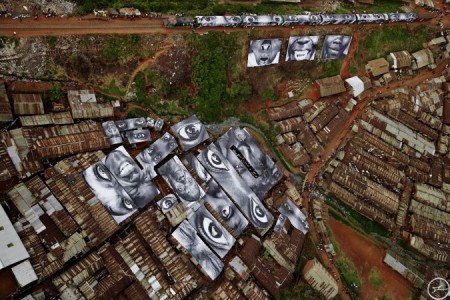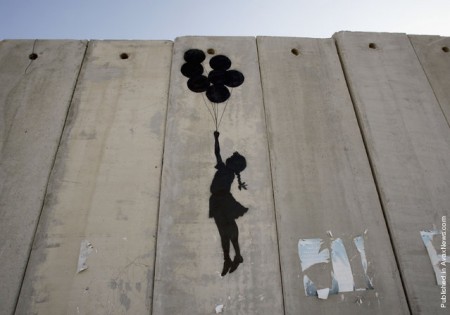The millennial generation is baffling to most who are outside of it. Truthfully, it is confounding to us as well. The onslaught of the internet and the ever expanding opportunities it offers is fundamentally changing the way we as a society do almost everything. Being the generation who grew up parallel with the personal computer, we millennials understand the technology intimately but have little context to see how it is continually shaping our lives and changing the status quo. For the artists of my generation, the internet enables the decentralization of opportunity, giving them license to market themselves, and fostering new mediums of art making which exist in and are made for the internet. These changes both give artists more power to shape their careers but also thrust them into a seemingly endless sea of other creatives looking for the same exposure. One might see this over abundance as a breeding ground for competition, but such is not the case. New communities online open doors for connections which would never be made otherwise and encourages cooperative art making and community oriented projects.
Almost everybody I know my age has a personal website. Whether a creative or not, this is how we share our talents and interests. Anybody with a basic understanding of a computer can now create a beautiful website which rivals that of an established business. This ability gives artists the freedom and creative license to shape their image and control how they market themselves. Older generations relied on galleries and agents to expose their work to peers and collectors; now, however, with social media, message boards, Pinterest, Etsy and artist resource websites, the artists can control their own marketing. Being ‘represented’ by a gallery is becoming far less important to the millennial artist, and may even be considered antiquated and unappealing. Why pay someone to do something you can do yourself? This shift away from the established norm is a double edged sword- for those artists who take to technology and put time and effort into maintaining their online presence, these free tools can propel them into artistic spheres more quickly and efficiently than ever before. For others this can be a daunting and onerous task, leaving them with few other options for exposure.
The artists who are naturally apt at creating an online presence do much more than post pictures of their latest work of art. When you ‘follow’ a millennial artist on Instagram or Facebook you will find windows into their inner life. These living journals record their work space, current projects, frustrations, failures and successes. The viewer becomes intertwined with the aura of the artist as much as the art itself. Like Andy Warhol, the artists become living brands of themselves, selling a lifestyle as well as their latest work. These accounts create allegiances and followings- relatively unknown artists in the analog world may have hundreds of thousands of followers watching their progress online.

With the world glued to its screens, the new definition of success is exposure. Be it accurate or not, we equate ‘likes’ and ‘shares’ to progress in our careers. The more widely distributed an image or video, the more likely it will fall into the hands of someone with the power to buy or commission your work. The “#” has allowed artists to tag their work with key phrases which can narrow the playing field so other artists and tastemakers with shared interests will see your work. But this isn’t enough, since on the flip side, thousands of other artists with access to beautiful websites and high quality photos are vying for the same attention. Seeking collaborations with other artists- across mediums and genres- can expand the reach of any one artist and help them stand out.
This approach to marketing, however, is a very new frontier and the ability to monetize the impact of exposure is not always clear. Some artists are able to secure commissions for projects or sales solely through their online stores, and more and more contemporary art is not an object you purchase from a wall; it’s an immersive experience which is hard to define and even harder to sell. This means that a lot of millennial artists look to grants and institutions to fund their large scale mixed media projects. These funded projects often encourage a collaborative or community minded approach, which makes them more marketable and often more inclusive. When larger institutions work with young artists, the results are mutually beneficial. The institutions give credibility to the artist and the artist accesses a base of potential patrons from a new generation. Struggling organizations can benefit greatly by bringing in an artist who can make a performance or event more memorable and fresh. Both have the benefit of having their information distributed widely on the internet by the other party. Bringing together their shared resources and creating an interdisciplinary experience establishes legitimacy and strengthens the image of both parties.
Creating art which translates seamlessly onto the internet comes second nature to many millennials. Much of the work artists are producing is at least subliminally targeting the fact that its main form of consumption will be online. Street artists like JR (who had a solo exhibition at the Cincinnati Contemporary Arts Center in 2015) and Banksy have risen to the top of the art world with site specific installations in remote locations which will only be viewed in person by very few. They are able to make bold impactful statements about communities and politics, while engaging the people who live there and widely distributing the documentation on the internet. These artists are also able to rally large groups of followers to execute large scale projects through their online presence, opening doors to collaborative projects on a scale unlike before. These performances and installations are not only documented by the artist but are recorded on mobile devices and distributed widely on the internet expanding their impact.

JR “Women are Heros- Kenya”, Artist’s website www.jr-art.net

Banksy, http://banksyworld.blogspot.com
In this same community building spirit, this generation also has an interest in looking within their community for talent. With the focus on buying local, eating local, revitalization the urban center, and building bridges- community oriented projects and common work spaces are emerging everywhere. These movements are about coming together and building something new- not tearing each other down. As a result, artist collectives and maker spaces which share skills, tools and resources can be found in any medium sized city across the country. In a reaction to the unprecedented amount of waste seen by my generation, sharing resources when possible is held in high regard. Online platforms also allow for mass community involvement to help an artist find particular tools, materials or subjects. Just last week I saw an artist post on Facebook, asking if anyone knew of an accessible 3d printer. Within an hour of posting not only had there been several responses but the file had been sent to a friend and the piece would be ready to be picked up the next day. Ability to spread information quickly and share resources builds stronger artistic communities in cities and provides a wealth of tools and information otherwise unavailable. Cooperation and sharing is built into the critical conceptual framework of the art world for millennials.
In a medium sized city like Cincinnati and with the ability to share information in an instant, it doesn’t pay to be outwardly competitive. It’s not a big enough city to be anonymous- people who break this cooperative attitude among their peers often get called out on it. It’s not cool to be catty anymore. What is considered more cutting edge and provocative is working together and engaging overlooked, underserved, parts of the community. In the age of the internet, the little guy has the ability to reign, and power itself is diffuse, not centralized.
The modern role of the artist is still a very much evolving identity. As access to computers and the internet becomes ubiquitous the artist is asked to wear more hats as they develop their voice. Promoter, collaborator, Instagram model, organizer, agent- every artist has to decide how present and engaged they will be with the online world and how much of themselves they will share with it. For many, the more they are willing to share, the more opportunity they will have to collaborate with other artists and institutions, thus garnering exposure and (hopefully) a chance to be funded and create more work. As we imagine the future of the artist, it is exciting to see the opportunity for the internet – a tool unlike any we have had before – to foster the coming together of resources and their redistribution. We can only speculate what being an artist will look like in the future, but based on the millennial approach we will see less art hanging on a wall and more a merging of art, life, and community.
Chelsea Borgman is an artist and writer working in Cincinnati. She works at Brazee Street Studios where she runs the artist resource website cincyartlink.com and C-LINK Gallery.
What a comprehensive, thoughtful article giving the reader a very clear overview of 21st century advances in collaboration and promotion. The writer has a entremely knowledgable base of information to share and she does so very generously. She would make an excellent Art feature writer. Thank you for publishing this information.